I'm running R version 3.0.2 in RStudio and Excel 2011 for Mac OS X. I'm performing a quantile normalization between 4 sets of 45,015 values. Yes I do know about the bioconductor package, but my question is a lot more general. It could be any other computation. The thing is, when I perform the computation (1) "by hand" in Excel and (2) with a program I wrote from scratch in R, I get highly similar, yet not identical results. Typically, the values obtained with (1) and (2) would differ by less than 1.0%, although sometimes more.
Where is this variation likely to come from, and what should I be aware of concerning number approximations in R and/or Excel? Does this come from a lack of float accuracy in either one of these programs? How can I avoid this?
[EDIT] As was suggested to me in the comments, this may be case-specific. To provide some context, I described methods (1) and (2) below in detail using test data with 9 rows. The four data sets are called A, B, C, D.
[POST-EDIT COMMENT] When I perform this on a very small data set (test sample: 9 rows), the results in R and Excel do not differ. But when I apply the same code to the real data (45,015 rows), I get slight variation between R and Excel. I have no clue why that may be.
(2) R code:
dataframe A
Aindex A
1 2.1675e+05
2 9.2225e+03
3 2.7925e+01
4 7.5775e+02
5 8.0375e+00
6 1.3000e+03
7 8.0575e+00
8 1.5700e+02
9 8.1275e+01
dataframe B
Bindex B
1 215250.000
2 10090.000
3 17.125
4 750.500
5 8.605
6 1260.000
7 7.520
8 190.250
9 67.350
dataframe C
Cindex C
1 2.0650e+05
2 9.5625e+03
3 2.1850e+01
4 1.2083e+02
5 9.7400e+00
6 1.3675e+03
7 9.9325e+00
8 1.9675e+02
9 7.4175e+01
dataframe D
Dindex D
1 207500.0000
2 9927.5000
3 16.1250
4 820.2500
5 10.3025
6 1400.0000
7 120.0100
8 175.2500
9 76.8250
Code:
#re-order by ascending values
A <- A[order(A$A),, drop=FALSE]
B <- B[order(B$B),, drop=FALSE]
C <- C[order(C$C),, drop=FALSE]
D <- D[order(D$D),, drop=FALSE]
row.names(A) <- NULL
row.names(B) <- NULL
row.names(C) <- NULL
row.names(D) <- NULL
#compute average
qnorm <- data.frame(cbind(A$A,B$B,C$C,D$D))
colnames(qnorm) <- c("A","B","C","D")
qnorm$qnorm <- (qnorm$A+qnorm$B+qnorm$C+qnorm$D)/4
#replace original values by average values
A$A <- qnorm$qnorm
B$B <- qnorm$qnorm
C$C <- qnorm$qnorm
D$D <- qnorm$qnorm
#re-order by index number
A <- A[order(A$Aindex),,drop=FALSE]
B <- B[order(B$Bindex),,drop=FALSE]
C <- C[order(C$Cindex),,drop=FALSE]
D <- D[order(D$Dindex),,drop=FALSE]
row.names(A) <- NULL
row.names(B) <- NULL
row.names(C) <- NULL
row.names(D) <- NULL
(1) Excel
- assign index numbers to each set.

- re-order each set in ascending order: select the columns two by two and use
Custom Sort...by A, B, C, or D:

- calculate
average=()over columns A, B, C, and D:

- replace values in columns A, B, C, and D by those in the
averagecolumn usingSpecial Paste...>Values:

- re-order everything according to the original index numbers:
